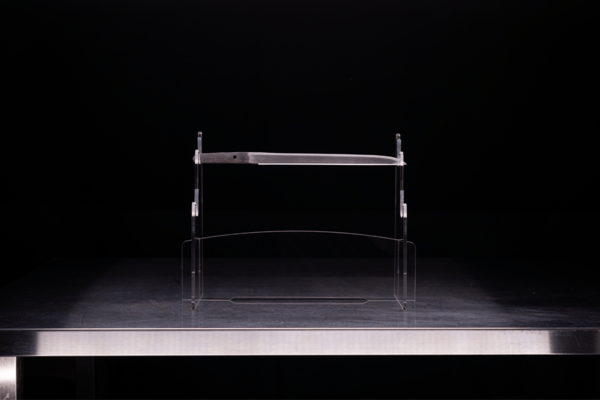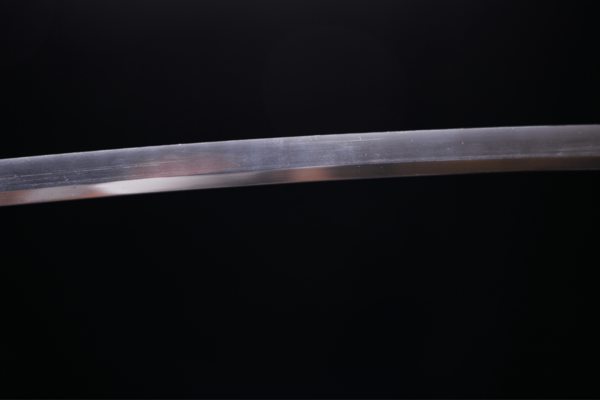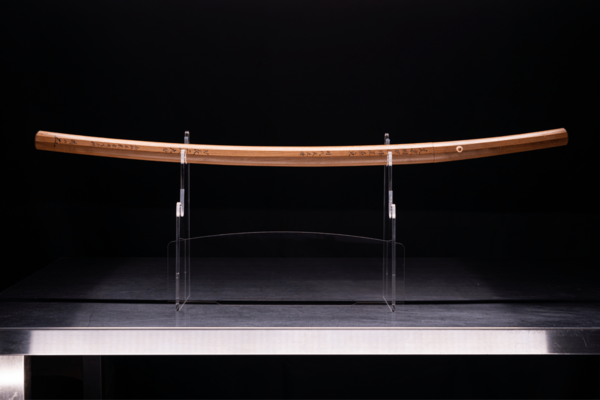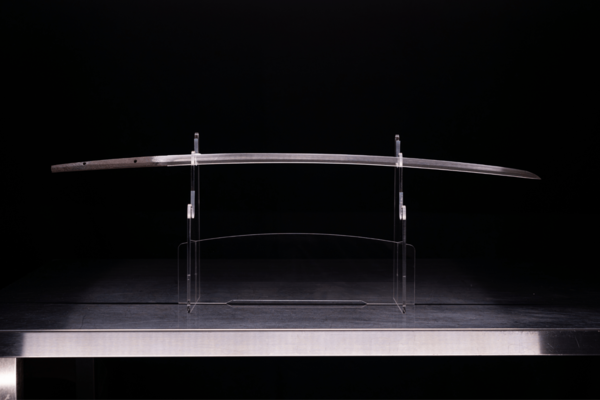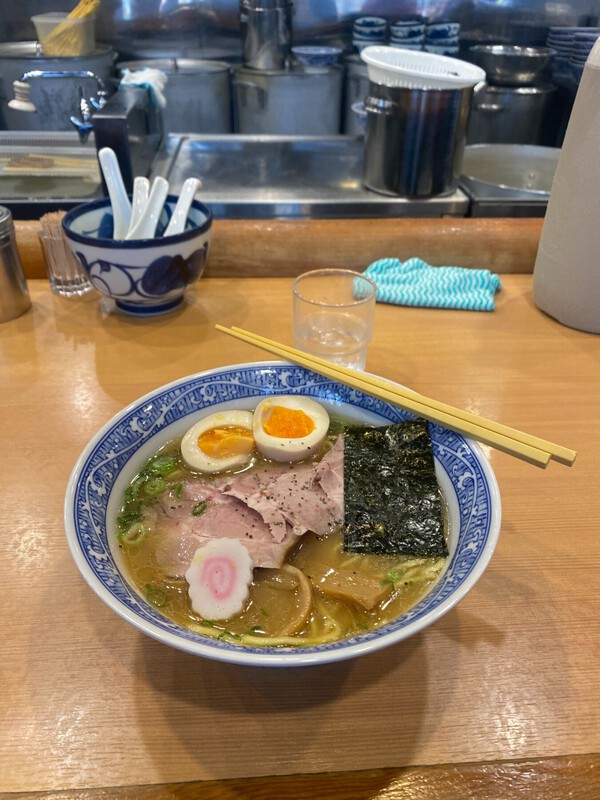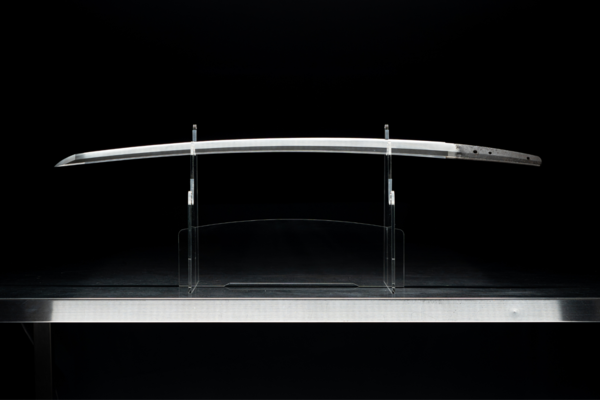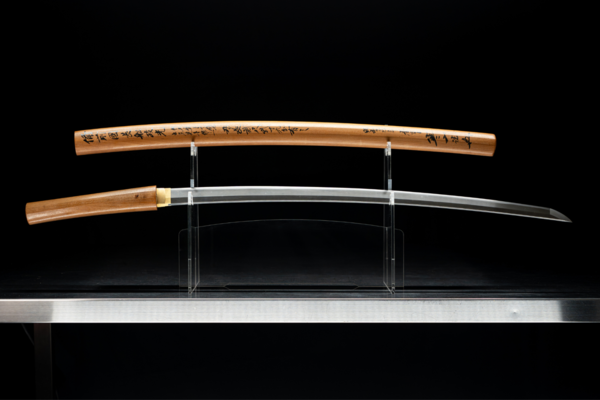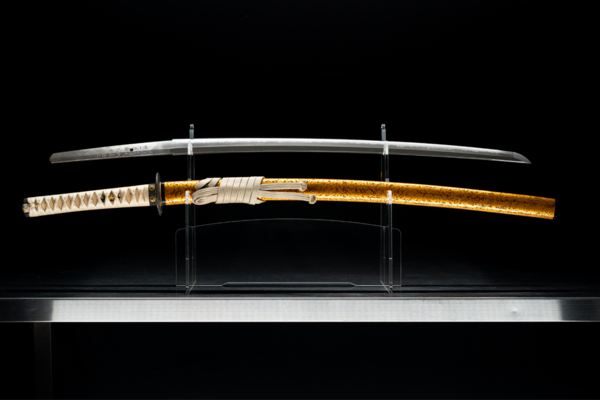-
Posts
112 -
Joined
-
Last visited
Everything posted by Seiko
-
I kind of know him personally. I think items are usually pretty cheap and worth it, he buys cheap swords and fix the wrong parts if needed, then sell it.
-
Hello everyone, Making a small post to ask if any of you had experience importing swords to Bulgaria. Before we did not have problems but recently it became harder. We tried with every forwarder in Japan to ship the sword to our customer and they do not want to take the risk. Bulgaria has some difficult customs. Right now, we're looking to Ship to an other country and then ship the sword from this other country to Bulgaria. So if any of you have experience doing that, it would be nice Most of our customers come from the US or France.
-
SOLD
-

Beware scammer on FB gunto type 98 red shark skin
Seiko replied to Alaen's topic in Auctions and Online Sales or Sellers
This is crazy. I didn't know that was happening so often. A solution could also be to ask for a specific picture angle or video. -

beautiful and unique tanto(铠通し)
Seiko replied to sorisori's topic in General Nihonto Related Discussion
Love it -
Hello, yes it is. It has been sold but we will be listing 3 new Katanas today if you are interested.
-
Thank you for the advices. I am kind of new to the forum so I didn't know. Thanks !
-
My bad !
-
Sorry for not answering. My notifications settings were wrong. I wrote price : $1130 + $50 Shipping (from Japan). There are no Shinsa papers.
-
-
Selling a Uda Kunitsugu Tanto with a beautiful Hamon. (blade tip slightly damaged). If you want more pictures please send me a message, I can't add a lot due to file size limit. (We take professional pictures in our studio on Tokyo) Signature: Obverse (Omote): Uda Kunitsugu, Reverse (Ura): - Type: Tanto Blade Length: 25.6 cm Period : Muromachi (around 1429) Measurements: Base width (Moto-haba): Approx. 2.2 cm Base thickness (Moto-kasane): Approx. 0.65 cm Tip width (Saki-haba): Approx. 1.8 cm Tip thickness (Saki-kasane): Approx. 0.5 cm Weight: Approx. 172.7 g (excluding Habaki and handle) Habaki Weight: Approx. 11.8 g Saya (Scabbard) Length: Approx. 41.5 cm Mekugi-ana (peg hole): 1 price : $1130 + $50 Shipping (from Japan)
-
-
-
Hello, selling a Hachiya Kanesada Katana. Can't add a lot of pictures on the forum because of images size. If you want more just send me a message please. I also have a video. Mei (Signature): 表【兼貞】Kanesada Type: Katana Period : Muromachi Registration Date: September 12, Heisei 3 (1991) Blade Length: 63.4 cm Curvature (Sori): 1.6 cm Mekugi-ana: 2 Motohaba (Width at the base): 2.0 cm Motokasane (Thickness at the base): 0.45 cm Sakihaba (Width at the tip): 1.35 cm Sakikasane (Thickness at the tip): 0.3 cm Blade Weight: Approximately 308.4g (excluding Habaki and handle) Habaki Weight: Approximately 10g Total Sheath (Saya) Length: Approximately 90.5 cm Price : $1400 + $50 Shipping
-

This is Fake right? signed but
Seiko replied to Johnbull's topic in General Nihonto Related Discussion
It's always Gunto... -

katana Katana by Bizen Masamitsu with sayagaki - NBTHK
Seiko replied to Seiko's topic in Swords and Edged Weapons
Thanks a lot for your comment. We got this blade by a collector's collection who passed away. The person who collected this sword has long since passed away. In his last days, he was in poor health and gave up on applying for the important sword examination he was looking forward to. -

katana Katana by Bizen Masamitsu with sayagaki - NBTHK
Seiko replied to Seiko's topic in Swords and Edged Weapons
For those asking, you can see more details here : https://tokyo-nihont...cts/katana-shirasaya -
Hello ! I own one of the biggest Katana brand worldwide (not Nihonto) and I with time I slowly got into Nihonto, also I always had that dream to live in Japan and allow people the get amazing swords from Japan so after 2 years of hard work I associated with Japanese partners and experts about Nihonto and was able to also propose Japanese antique & Shinsakuto. Anyway, this post is not about this. As my brand has some visibility (google, social media, mails...) I was thinking maybe I could help people sell their swords by adding them on my website and promote (obviously I will take a small commission). Would that be okey ? Would anyone be interested ? If anyone from the forum could answer that would be cool :D Thanks everyone for sharing about Nihonto everyday ! The picture is just an amazing Ramen I had in Tokyo
-

katana Katana by Bizen Masamitsu with sayagaki - NBTHK
Seiko replied to Seiko's topic in Swords and Edged Weapons
Please ask me at : contact@tokyo-nihonto.com if you wish to have more pictures. The forum is limited in term of images size. Thanks ! -

katana Katana by Bizen Masamitsu with sayagaki - NBTHK
Seiko posted a topic in Swords and Edged Weapons
This distinctive katana hails from the Nanbokucho Era, characterized by the expert craftsmanship associated with this period. The sword is mumei, attributed to Den Bizen Masamitsu, a fact further validated by the NBTHK, dated October 13, 1979 . The nagasa (blade length) measures 69.4 cm, with a sori (curve) of 2 cm. Its sugata (shape) is a shinogi-zukuri and iori-mune, with a wide mi-haba that tapers slightly towards the kissaki (point). The kasane (thickness) is substantial, and the kissaki extends just slightly, aligning with the design traditions of this era. In terms of the blade's jihada (grain pattern), the katana exhibits an itame with hints of mokume mingled within the flowing hada. An appealing touch of ji-nie can be spotted, and the steel boasts plentiful chikei. Furthermore, utsuri can be discerned within the beautifully forged hada. The hamon (temper line) is a ko-notare with a ko-gunome pattern, with pointed elements also visible. As for activities, ashi and yo can be seen, complemented by fine kinsugi and sunagashi. The boshi (temper pattern in the tip area) showcases a jizo-boshi with a long kaeri. The nakago (tang) appears suri-age with three mekugi-ana, aligning with the modification traditions of its time. The sword's form displays the defining characteristics of the Nanbokucho era - a wide mi-haba, slightly extended kissaki, and ample sori. Its hamon and hada further hint at the school of the famed Bizen Osafune smith, Kanemitsu. The NBTHK attributes the blade to Masamitsu, who was among Kanemitsu's top students. The sword is mounted in a shirasaya with a sayagaki attributing the blade to Bizen Osafune Masamitsu, as confirmed by the renowned sword expert and former head of the NBTHK, Dr. Kanzan Sato. Kanemitsu, believed to be a student of the Soshu den master Masamune, brought the Soshu style of smithing to Bizen, resulting in the popular Soden-Bizen style. His techniques attracted several top students, including Masamitsu. Masamitsu's works span around 40 years, from the Enbun to Oei periods. Although a theory exists that two generations may have adopted the Masamitsu name due to a shift in working style, it remains unconfirmed. Masamitsu's swords have achieved the prestigious Juyo Token rank, indicating high quality and significance. Given this sword's features and quality, it stands as a promising candidate for the NBTHK Juyo Token shinsa, further increasing its value and importance. This katana thus presents a remarkable blend of artistry, history, and tradition in the sphere of Japanese sword-making. Price : $2500 -

Katana by Masayuki, Muromachi Period - NBTHK
Seiko replied to Seiko's topic in Swords and Edged Weapons
Adding more image here because our pictures are very high resolution and I can only add 2 per 2. Contact me by e-mail for more pictures : contact@tokyo-nihonto.com -
This intriguing Katana takes us back to the later Muromachi (Eisho-Tensho) era, steeped in the artistry of traditional Japanese sword-making. With a kin zogan mei attributing the blade to Masayuki, it comes with an NBTHK Tokubetsu Kicho kantei-sho dated October 8, 1967, further validating its provenance. Intriguingly, an inscription on the blade reads ("shortened by Nobukuni Yoshimasa"), indicating a possible modification to the blade's original length. The nagasa of the blade measures 67.4 cm, with a sori (curve) of 1.4 cm. Its sugata (body) displays a shinogi-zukuri, iori-mune design with an average mi-haba (width) that tapers elegantly to the tip. The kasane (thickness) is also of average thickness, and the kissaki (tip) is of medium length. The slight shallowness of the sori and the typical katate-uchi shape add to its distinctiveness. Examining the jihada, the blade exhibits a ko-itame mixed with masame. The presence of fine ji-nie testifies to the blade's quality, and its steel has been tightly forged. Kitae-ware can be spotted in the bo-hi, adding a characterful touch. The hamon presents a classic chu-sugu-ha with a bright ha-buchi lined in ko-nie, while the boshi manifests as ko-maru with a lengthy return. The nakago appears machi-okuri with four mekugi-ana, one filled with copper. Adding an intriguing element, a shinobi-ana is present at the end of the nakago. The blade also features bo-hi horimono. Despite initial attribution to Masayuki from Bizen, this katana is likely the work of the Bingo Masayuki group of the Mihara school from the Eisho to Tensho period. This deduction is due to the absence of the typical traits of Nanbokucho-era Bizen blades in this piece, such as great length, wide mi-haba, extended kissaki, and Soshu den influences in the hada and hamon. Meanwhile, the Meikan lists several smiths from the Mihara school in Bingo using the Masayuki mei in the later Muromachi period. Blades from this period are often referred to as "katate-uchi" or "one-handed swords" and exhibit several features present in this blade. These features include its length, relative slenderness, light weight, shallow sori, medium kissaki, and the presence of a shinobi-ana. The blade's shape and features, along with the hada and the sugu-ha hamon, are typical of late Muromachi Mihara school work. The inscription, "shortened by Nobukuni Yoshimasa," is also consistent with an apparent machi-okuri shortening. This katana is paired with an elegant buke-zukuri koshirae. It features a vermilion lacquered saya, a square-shaped, shakudo sukashi tsuba with temple window-shaped piercing and a silver fukurin. The kashira is made of tsuno paired with a fuchi crafted in shakudo, adorned with a wave design in kin zogan. The menuki are crabs in shakudo, adding a unique artistic touch. The habaki is a one-piece design with a copper base covered in silver foil. This katana embodies the rich history of Japanese sword-making, drawing on the traditions of the later Muromachi era and the craftsmanship of the Mihara school. Its fine construction and elegant koshirae make it a valuable piece for any collector or admirer of Japanese art and culture. This fine blade comes with a well appointed buke-zukuri koshirae. It features a vermillion lacquered saya, a square shaped, shakudo sukashi tsuba with temple window shaped piercing and a silver fukurin, and a tsuno kashira paired with a fuchi done in shakudo with a wave design in kin zogan. The menuki are crabs in shakudo. The habaki of a one piece design with a copper base covered in silver foil. Price : $2700
-

Katana by Tachibana Munehiro with Golden Koshirae
Seiko replied to Seiko's topic in Swords and Edged Weapons
Adding more pictures here. I can't upload everything because of limit. Our pictures are very high resolution. You can still ask for more pictures at our mail : contact@tokyo-nihonto.com -
This exquisite katana represents a modern convergence of traditional craftsmanship and historical lineage, carrying forth the spirit of Japanese sword-making. Crafted in the Showa era, the blade is the work of Tachibana Munehiro, an accomplished smith from Yo Shu (modern-day Ehime Prefecture). Created in July 1987 at the behest of Ashitate Yasushi, the General Director of the Otsuki School of Swordsmanship, this katana evokes the strength and discipline of a time-honored martial tradition. The katana's nagasa, measures 2 shaku 1 sun 5 rin (63.8 cm/ 25.11 inches), with a sori (curve) of 1.4 cm / 0.55 inches. Rendered in the iconic shinogi-zukuri style with an iori-mune and chu-gissaki, the blade features an ubu nakago, skillfully finished with kesho yasuri-me, and one mekugi-ana. Munehiro’s meticulous craftsmanship is on full display through the blade's Gunome-choji-midare hamon, characterized by a play of deep ashi and fine sunagashi, over a bed of tight itame covered in delicate ji-nie that contributes to a textured and vibrant landscape. Tachibana Munehiro Background : Tachibana Munehiro, whose real name was Toriu Hiromu, was born on September 5, 1925, in Ehime Prefecture. His sword smithing journey began in 1939 under his father Hiromasa's guidance, a student of the celebrated smith Takahashi Yoshimune. Munehiro thus carries the lineage of Takahashi Yoshimune, whose brother, Takahashi Sadatsugu, was the first to receive the distinguished title of "Ningen Kokuho" or "Living National Treasure." This lineage fostered many exceptional smiths, highly regarded for their work. During World War II, in 1942, Munehiro further honed his skills in the Kokura Rikugun Zoheisho, an Imperial Army Factory located in Kokura city, Kyushu. Post-war, he transitioned to blacksmithing, crafting farming tools, before returning to his passion for swordsmithing in 1969. Munehiro’s sword displays the Bizen style of his lineage, featuring a florid gunome-choji hamon, a tight itame hada, and a commanding shape. The blade is housed in an elegantly crafted koshirae, featuring a gold foil, two-piece habaki, ensuring preservation and longevity of this masterpiece. Complementing the blade, the koshirae boasts a stunning gold and shakudo nanako tsuba, gold and shakudo nanako fuchi-gashira signed by Ooka Masatsugu, and matching gold and shakudo menuki. Ooka Masatsugu was the third master of the Ooka school, who lived and worked in Edo in the early 1800s. As a branch of the renowned Hamano school, the Ooka school served the Owari Tokugawa family, thus adding another layer of historical significance to this piece. This katana is not just a blade; it’s a testament to Japanese tradition, meticulously crafted by a distinguished smith, and a reflection of the noble martial ethos of the Otsuki School of Swordsmanship. This blade carries forth an epic tale, intertwining history, lineage, and tradition with each passing cut. Price : 4500$
-
Amazing. Congratulations to you





.thumb.png.b552b40a9a12a233ee3f4c85ef24d6ff.png)

